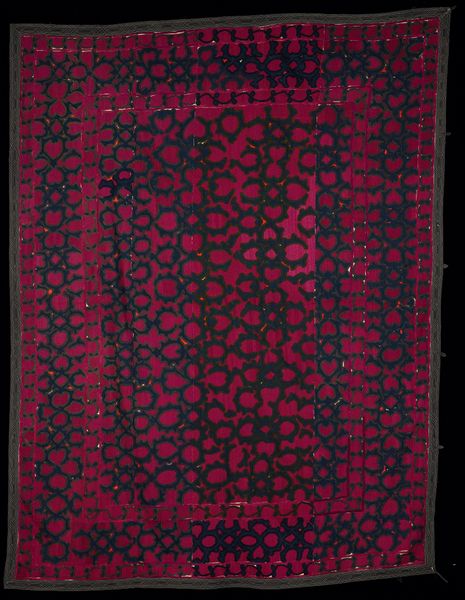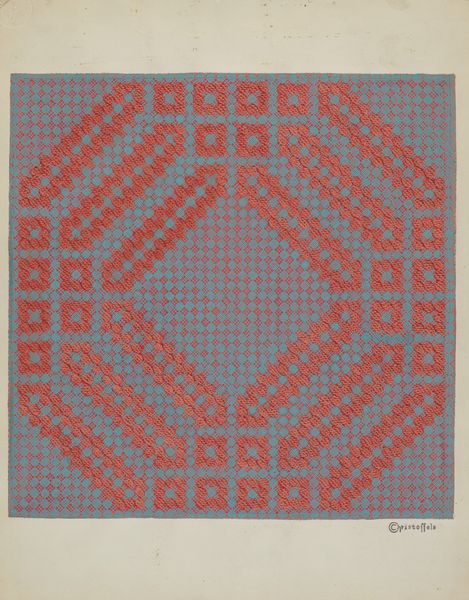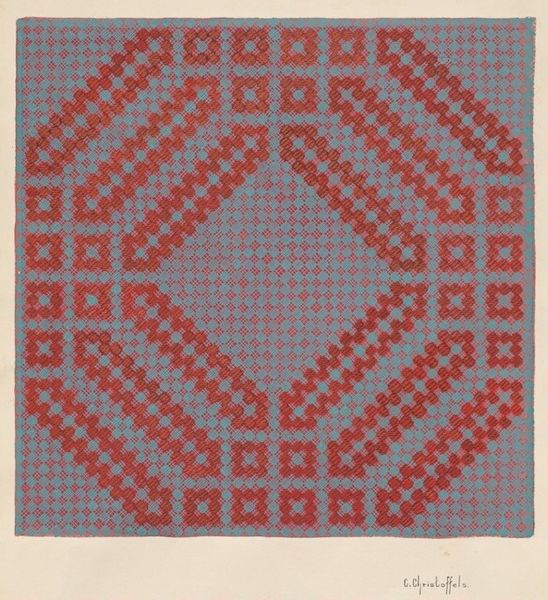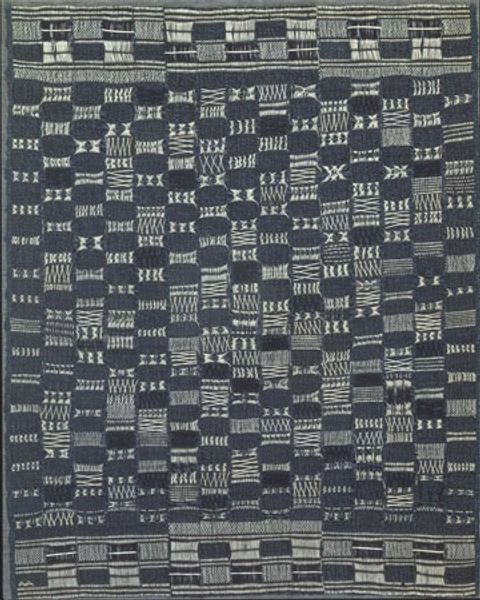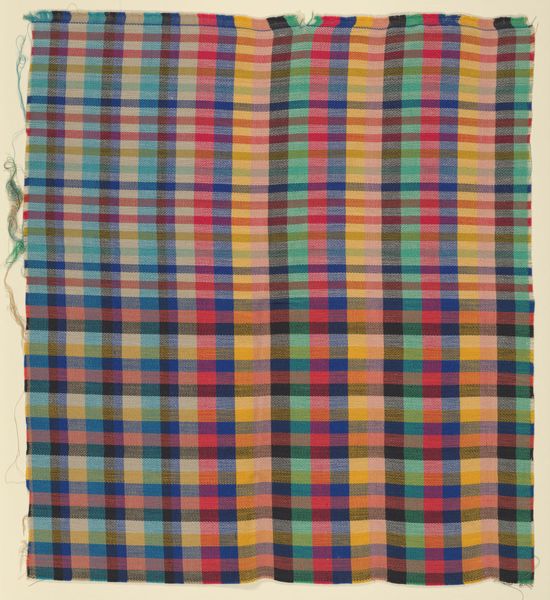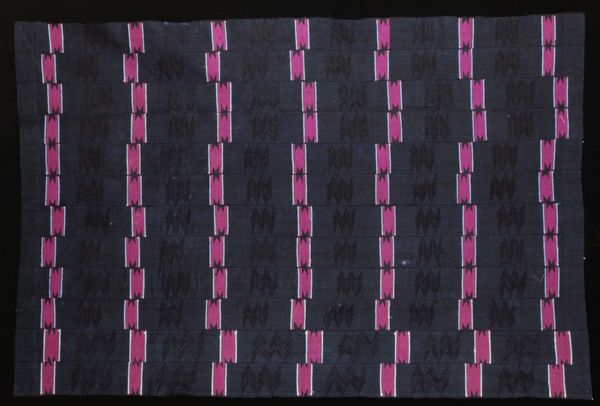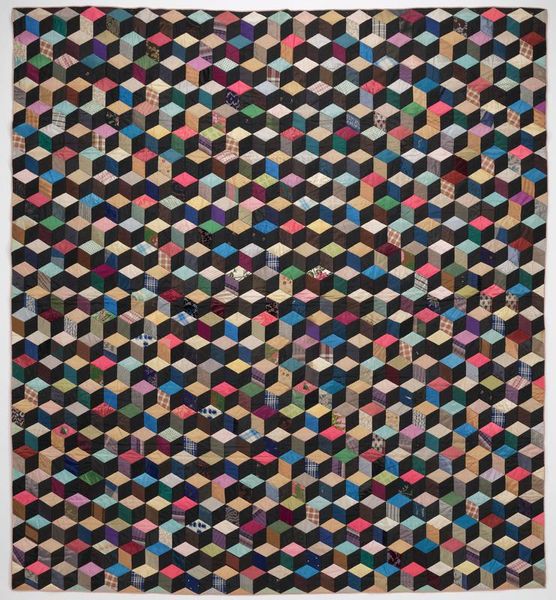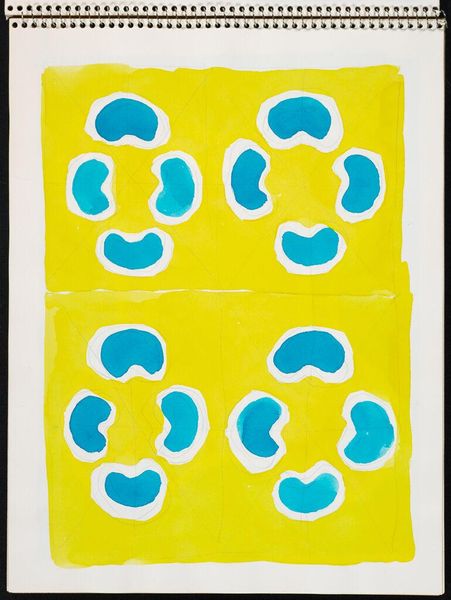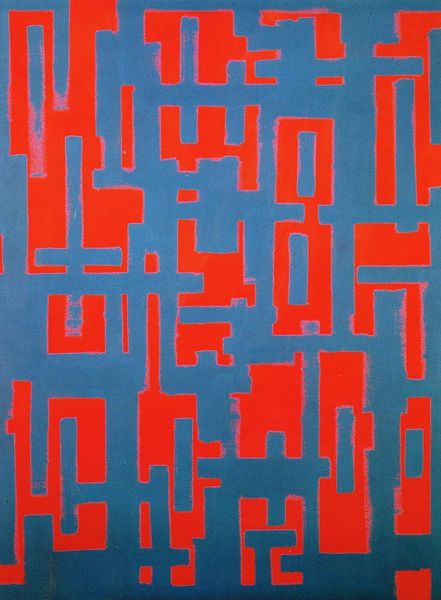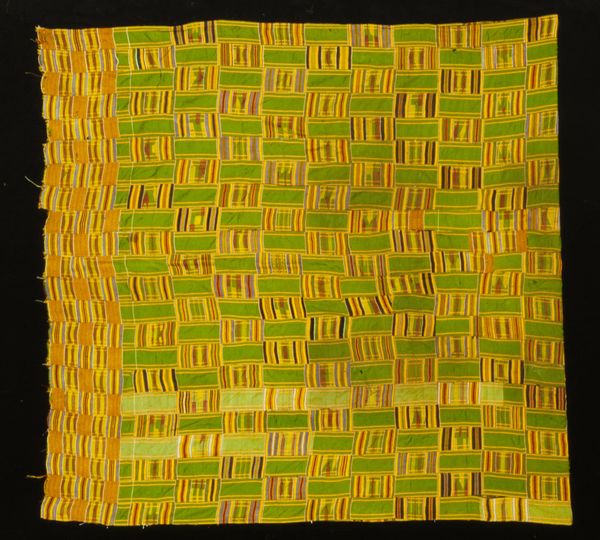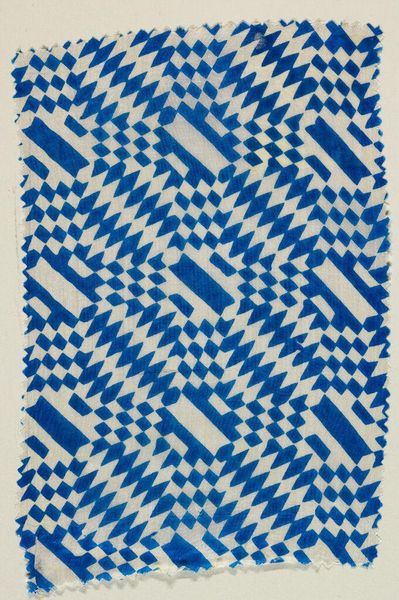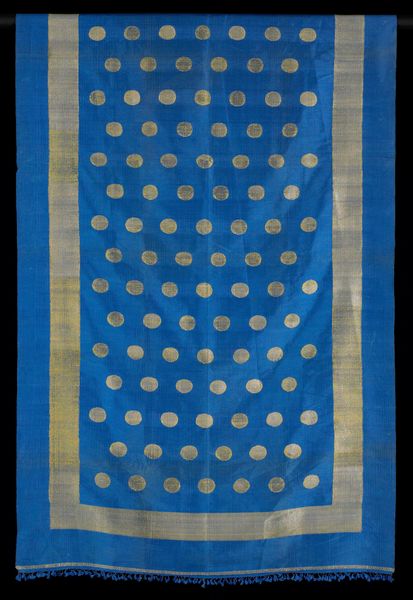
textile, cotton
#
type repetition
#
repetition
#
bold text
#
tactile
#
multicoloured
#
textile
#
bold text stroke
#
chalky texture
#
thin text stroke
#
united-states
#
pattern repetition
#
cotton
#
repetition of line
Dimensions: 79 3/8 × 76 in. (201.61 × 193.04 cm)
Copyright: Public Domain
Curator: The visual simplicity and vibrant color choices really grab my attention right away. It feels both modern and… strangely soothing. Editor: I agree. There’s a strong graphic quality here. What we're looking at is a "Double Irish Chain variation quilt," crafted sometime between 1940 and 1960, currently residing here at the Minneapolis Institute of Art. It's created from cotton textile. Curator: That design speaks volumes about identity and the role of textiles in domestic life during that mid-century period. The repetitive geometric patterns evoke both comfort and constraint. It’s tempting to view such domestic artistry through a feminist lens, considering the historical limitations placed on women’s creative expression. Editor: The “chain” motif has been used for generations in textile arts around the globe. It often stands as a symbol of connection, continuity, and heritage, with each link echoing shared values or a communal spirit. Curator: Exactly. And let’s consider the intersectional aspects. How does race, class, or region impact the way quilt making has functioned? Was it a form of resistance, a subversive act of creativity within oppressive systems? I think this work opens a door for considering gendered labor practices. Editor: What also fascinates me is the enduring presence of chain symbols across religions and belief systems, hinting at unity, unbreakable vows, or destiny. Could this particular choice of pattern be loaded with conscious symbolism or rather simply passed-down aesthetic pleasure? Curator: It’s almost definitely both! There is meaning that comes directly from practice – a form of visual folk culture where messages can exist that defy traditional, academic, “fine art” modes of communication. The labor becomes inherently political when situated historically. Editor: It also evokes a very visceral connection for many of us; something about textile and its history of intimate association, whether literally a "security blanket," or in a larger familial sense. Curator: I couldn't agree more. Looking at it through an intersectional lens certainly complicates but enriches this. Editor: Indeed, tracing the motifs offers us so much. Thank you! Curator: Thank you, that was insightful.
Comments
minneapolisinstituteofart almost 2 years ago
⋮
Though its vibrant colors are eye-catching, this quilt is most significant for its design: a variation on the Irish Chain, a pattern popular in the United States since the early 1800s. In a traditional Irish Chain, the squares form a diamond pattern. Here, the pattern has been transformed into a vertical-horizontal grid by rotating the squares a quarter turn (setting them “on point,” in quilting terminology). This shows how a quilter could improvise and personalize her design while maintaining cherished communal patterns. The name Irish Chain originated in the United States. In Ireland, the pattern was known simply as “patching.” When waves of Irish immigrants arrived in the United States in the early 1800s with their cherished patch quilts, the name “Irish Chain” emerged.
Join the conversation
Join millions of artists and users on Artera today and experience the ultimate creative platform.
